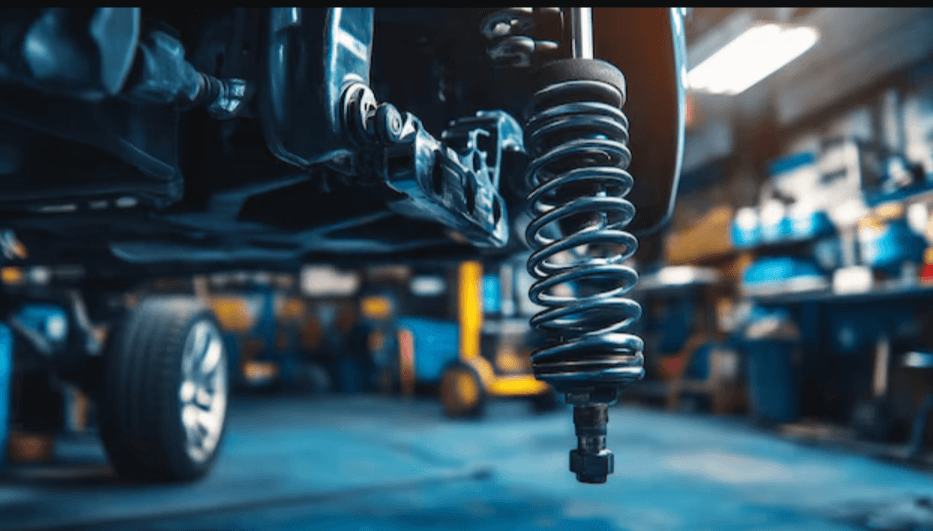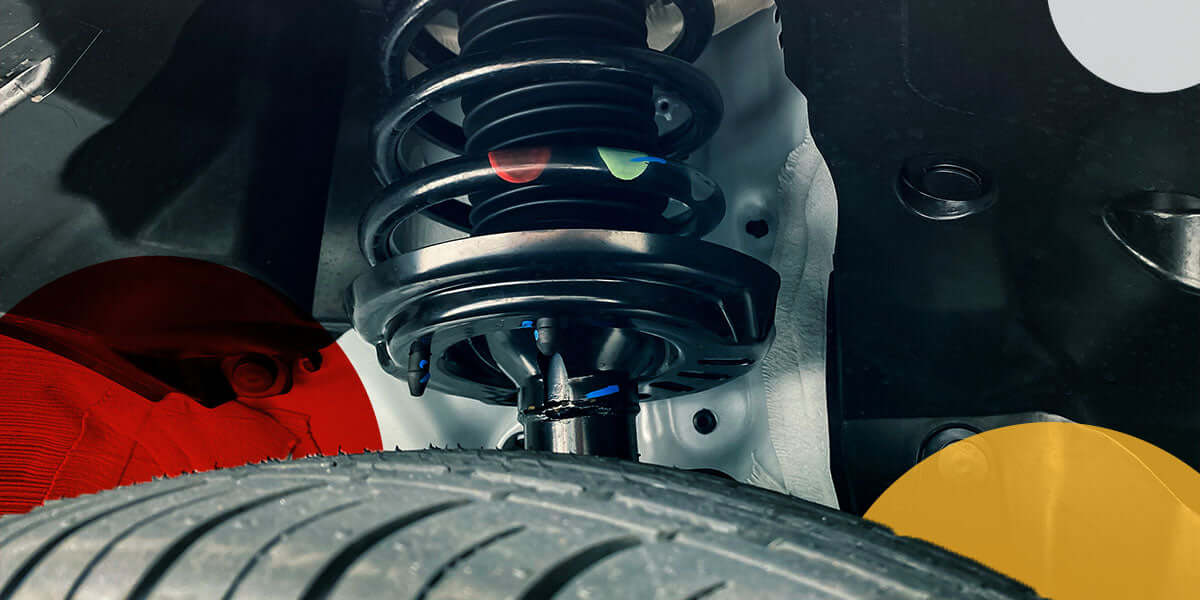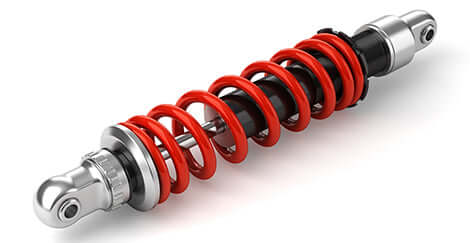Table of Contents
- What To Consider When Installing New Struts and Shocks
- 1. Don’t Wait To Replace Your Shocks and Struts
- 2. Determine How Many Shocks and Struts You Need To Replace
- 3. Decide What Kind of Shocks and Struts You Want To Install
- 3. Choose a Reputable Manufacturer
- 4. Ensure You’re Getting the Right Components
- 5. Determine Whether You Can Do the Installation at Home
- 6. Double Check Everything
- 7. Allow for a Break-In Period
- 8. Check Up On Your Suspension Occasionally
- Trust Strutmasters for Your New Shocks and Struts
When it’s time to replace the shocks and struts on your vehicle, you have some important decisions to make. Your suspension is a vital component of your vehicle that affects how it handles, stops, and rides. The right solution can restore your car’s performance and give you years of reliable use. The wrong one can have catastrophic effects.
In this article, we go over the eight most important considerations for replacing the shocks and struts on your vehicle. Keeping these in mind can help ensure you get the right solution for your vehicle.
What To Consider When Installing New Struts and Shocks
Depending on your vehicle, you probably have a lot of options for the types of replacement components you buy, who you buy them from, and how you install them. Making these decisions can be overwhelming, but if you take them step-by-step, you can make the task much more manageable.
1. Don’t Wait To Replace Your Shocks and Struts
It is almost never too early to replace the suspension components on your vehicle. While it may be easy to ignore early signs of trouble, driving on even slightly compromised shocks and struts can cause major damage to your vehicle.
Early Warning Signs of Suspension Failure
Most modern cars have an onboard diagnostic system that can detect problems with the suspension. However, these systems may not notice the issues until they’ve become relatively severe. There are a few warning signs that your suspension is failing that you may notice before your diagnostic system does, including:
Poor handling: When vehicle suspensions aren’t working at full strength, you may notice that your car is more difficult to handle on the road. For example, you might feel the body swaying as you go through turns.
Sagging: If your vehicle is sitting lower than it should at any corner, it usually means the suspension at that point isn’t working properly. This is most common in the rear of a vehicle, but it can occur at any wheel.
Extended stopping: Your shocks and struts absorb a lot of the force of bringing your vehicle to a stop. If they are worn down, your vehicle will take longer to stop than normal.
Noisy compressor: In cars with air suspensions, the compressor is what generates the air needed to inflate the air springs. Under normal conditions, the sound of the compressor running is barely noticeable. If you hear it running loudly or struggling to cycle, this is a sign that the suspension isn’t working properly.
Failing the bounce test: You can use the old-school “bounce test” method to look for suspension problems. When you press down on the bumper, a healthy suspension will return it to the proper height almost immediately. If it takes a long time to rise or bounces up and down before settling, you probably have a problem with your shocks and struts.
2. Determine How Many Shocks and Struts You Need To Replace
In some cases, you may only need to replace the front or rear struts and shocks. In others, you may need to install four new assemblies.
While you can save some money in the short term by only replacing two of the four sets on your vehicle, it isn’t always a good idea. Generally speaking, suspension components tend to wear out at relatively the same rate. That means that even if half of your struts are still in decent shape, they aren’t likely to stay that way for long.
In addition, there will be some difference between your new struts and your old ones in terms of how they support your vehicle and handle. That can lead to uneven wear and tear that can cause damage to other parts of your vehicle — easily negating any savings you may have gotten by only replacing the suspension on one end of the vehicle.
3. Decide What Kind of Shocks and Struts You Want To Install
If your vehicle currently uses an air suspension, you’ll have a decision to make about whether to stick with the air ride or convert to a coilover system. There are a few good reasons to consider repairing your air suspension. You may want to maintain the original ride, for example. Some drivers simply prefer the feel of an air suspension and are happy to pay the difference to keep it.
However, an air suspension conversion kit is a much cheaper alternative to fixing your air ride. Typically, a full conversion for all four wheels of a vehicle costs about the same as replacing a single air strut, saving thousands of dollars. Coilovers also come with some notable benefits beyond cost.
Advantages of Converting To Coils
These are some of the other upsides to using a conversion kit that are worth considering:
Cheaper to install: Traditional coilover systems are very simple, utilizing just a few static parts. That makes installing them a quick and easy job for any mechanic, or a job many people can do at home, increasing how much you save by converting.
More dependable: There is just a lot that can go wrong with air suspensions. Coilover strut and shock assemblies, on the other hand, are simple in design and made with solid, non-moving components. This means fewer parts that can wear out and a lower chance that any of them will.
One-time fix: Once one part of an air suspension wears out, other components are soon to follow. This can lead to many repeat trips and expensive repair bills after the initial fix. Due to their superior durability, coilover shocks and struts fix your air suspension problems for good the first time, with a solution that lasts for years to come.
3. Choose a Reputable Manufacturer
Whether you decide to stick with your air ride or convert to a coilover system, it’s important to find a manufacturer you can trust. Your car’s suspension is a critical part of its overall safety system, and you have to trust your safety and the safety of anyone else riding with you to it.
Some manufacturers find ways to cut corners that can put you in a bad spot. For example, some may repurpose strut assemblies meant for one vehicle for another if it offers a “good enough” fit. This can lead to poor performance and may even damage your vehicle. Others may use lower-quality materials that wear out easily and can be vulnerable to breaking while in use.
The suspension component industry is filled with fly-by-night actors who only see an opportunity. Veteran companies like Strutmasters are still around because they consistently provide reliable, high-quality products and take care of their customers.
4. Ensure You’re Getting the Right Components
Pay attention to the details when you’re buying new shocks and struts for your vehicle. Slight variations between model years and even trim levels can make a big difference. You don’t want anything less than an exact fit.
A good supplier will list all the relevant details about the vehicle a set of shocks and struts is designed for. Make sure that these details match those of your vehicle before making a purchase. Installing the wrong shocks and struts can have a wide range of negative effects, from providing an uncomfortable ride to making your vehicle dangerous to drive.
You can carefully check your vehicle details yourself to see that they line up with the shocks and struts you’re buying, but it’s never a bad idea to ask for assistance. At Strutmasters, our Suspension Experts help ensure that customers get exactly the kit or components they need.
5. Determine Whether You Can Do the Installation at Home
One of the biggest advantages of coilover struts and shocks is how simple they are to install. Most Strutmasters kits include complete, pre-loaded strut assemblies that are ready to put on your vehicle right out of the box.
This makes it a quick and easy job for any mechanic, which keeps labor costs down. But it’s worth considering whether you can do the job yourself. As long as you’re reasonably handy with a wrench, most people can install their new shocks and struts in about one hour per wheel.
Here’s what you need:
1. Socket wrench set
2. Sturdy jack or set of ramps
3. Light source
4. Rubber mallet
5. Safe, dry space to work
All Strutmasters kits come with detailed instructions to walk you through the installation, and many have videos too. Our Suspension Experts can also help you install your new shocks and struts if you run into issues.
6. Double Check Everything
Once again, your struts and shocks are vital to the safety of your vehicle. Whether you install your new suspension parts yourself or take it to the mechanic, there is no reason not to double check the work.
Fortunately, due to the simple design of coilovers, this only takes a few minutes. Check to see that all nuts and bolts are fastened securely at each point. This is usually two or four points at the top mounting bracket and the connections at the bottom of the assembly. You don’t want to overtighten anything, but nothing should be loose, either.
7. Allow for a Break-In Period
It is understandable to be eager to enjoy your refreshed ride after installing new shocks and struts. However, for that first trip down the road and for a short time after, your ride may feel a little stiff. Your vehicle may also sit a little higher than expected.
This is normal. The springs in your new strut assemblies take time to settle into their intended position and provide the level of resistance they were designed for. You can expect this break-in period to last for up to a couple hundred miles.
In rare instances, there may be faults with the design, issues with the installation, or the wrong parts may have found their way into your kit. If you’ve driven around on your new shocks and struts for a while and things still don’t feel right, then it’s time to check. At Strutmasters, we offer a one-year limited warranty for cases like these to ensure our customers get exactly the suspension solution they seek.
8. Check Up On Your Suspension Occasionally
Coilover shocks and struts are as close to a “set it and forget it” suspension solution as you’ll find. But given how important they are to your vehicle, it pays to check up on them every once in a while.
Over time, vibrations from the road can cause bolts and other parts to rattle loose. If you’ve hit a curb or had to brake suddenly, you can also knock something out of place. Pay attention to how your vehicle feels and don’t ignore changes in steering, noise level, or braking. It’s also a good idea to visually inspect your shocks and struts from time to time, such as when you’re putting air in your tires.
Trust Strutmasters for Your New Shocks and Struts
Installing new shocks and struts on your vehicle can breathe new life into it and make it enjoyable to drive once again. But that’s only the case if you go with the right solution.
Since 1999, car owners around the country have trusted Strutmasters for replacement shocks and struts. And when it comes to your car’s suspension, trust is everything.






